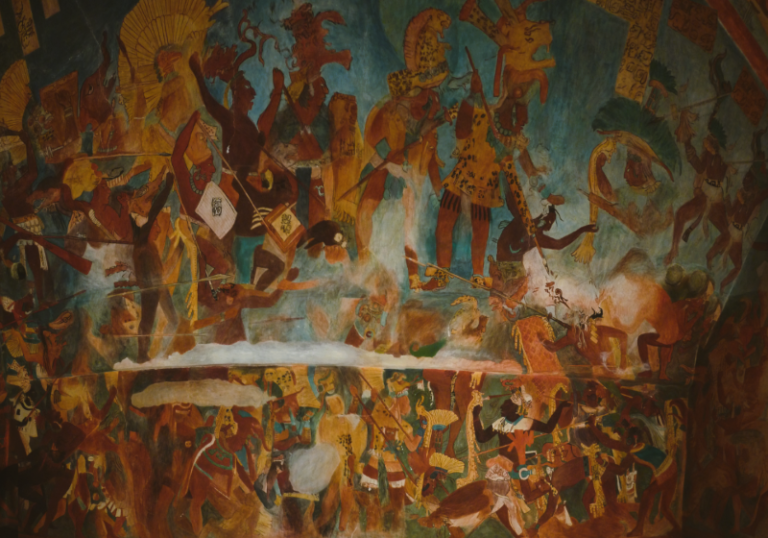

Trump’s appointment of Jim Byron to lead the National Archives represents more than personnel change. It signals a profound shift in how the government may present and interpret the historical record.

By Matthew A. McIntosh
Public Historian
Brewminate
A Startling Appointment
President Trump’s decision to appoint Jim Byron, president of the Richard Nixon Foundation, to help oversee the National Archives and Records Administration (NARA) as sernior advisor to Marco Rubio (currently the Acting Archivist after Trump’s shakedown) has already set off waves of alarm across the historical community. Within weeks of his arrival, 27 employees across the federal presidential library system were fired. The dismissals, coupled with Byron’s background, suggest an effort to reconfigure how the nation remembers its recent past.
The Nixon Foundation is not a neutral institution. It has long argued for a sympathetic reevaluation of Richard Nixon’s presidency, portraying him as a foreign policy visionary unfairly undone by the Watergate scandal. Byron has been a central figure in shaping that narrative. Now, as the head of the very agency tasked with preserving America’s documentary heritage, he stands positioned to translate partisan revisionism into national record.
Watergate and the Republican Reframing
For many Republicans, Nixon’s resignation in 1974 remains a wound. The argument that he was forced out by an aggressive press and partisan enemies has circulated for decades, gaining renewed energy in Trump’s orbit. Nixon’s story, reframed as one of betrayal rather than accountability, provides a template for Trump’s own grievances about impeachment, indictment, and media coverage.
The Watergate tapes, congressional testimony, and the infamous “smoking gun” have long been regarded as unambiguous proof of presidential wrongdoing. Yet in revisionist accounts, they are softened, explained away, or cast as overblown. Byron’s elevation in NARA makes it possible for those interpretations to move from the margins into the mainstream of federal institutions.
The National Archives as Battleground
NARA is more than a warehouse of dusty boxes. It safeguards presidential papers, declassified intelligence, and the evidentiary backbone of democratic accountability. From the Pentagon Papers to the Mueller Report, its holdings provide the raw material for understanding power and its abuses.
By reshaping leadership and removing seasoned staff, Trump is reshaping how this material will be curated, interpreted, and made available. Already, scholars worry about access restrictions and subtle shifts in how exhibits are framed at presidential libraries. If the Smithsonian represented a visible front in Trump’s campaign to reframe history, the National Archives is a quieter but arguably more consequential one.
Cultural and Political Echoes
The effort to rehabilitate Nixon intersects with broader cultural currents in Republican politics. Figures like Sen. Ted Cruz and commentators on conservative media platforms have suggested that Nixon was unfairly targeted and that his resignation was unnecessary. Trump himself has privately mused, according to several reports, that Nixon’s mistake was stepping down rather than fighting impeachment to the bitter end.
These sentiments resonate with Trump’s own legal troubles. Rewriting Nixon’s downfall into a story of victimhood provides a useful precedent for defending his own resistance to accountability. It suggests that resignation is weakness, that prosecutions are political, and that history itself can be rewritten to absolve rather than to indict.
The Human Cost of Firings
The removal of 27 employees across the presidential library system is not only a bureaucratic reshuffle. It represents the loss of expertise built over decades. Archivists and curators who devoted their careers to ensuring impartial stewardship of historical documents are being replaced by appointees who may privilege loyalty over professionalism.
For historians, this is a chilling signal. The federal preservation of history has long relied on the quiet diligence of nonpartisan professionals. Their abrupt dismissal suggests that Trump’s administration views archives not as a public trust but as another theater for political struggle.
Conclusion: History as Political Property
Trump’s appointment of Byron to help direct the National Archives represents more than personnel change. It signals a profound shift in how the government may present and interpret the historical record. If Nixon is rehabilitated within the archives, the implications extend beyond one presidency. It becomes a precedent for all leaders who seek to recast scandal into triumph, corruption into victimhood.
The American archive was designed as a safeguard, a guarantee that documents of power would be preserved against manipulation. In placing the Nixon Foundation’s voice at its helm, Trump has transformed it into a contested site, where the battle is not only over what happened but over who gets to decide what the nation remembers.
Whether the hoard of evidence from Watergate remains an indictment of presidential abuse or becomes a prop in the theater of revisionism will determine not just Nixon’s legacy, but the credibility of history itself.
Originally published by Brewminate, 09.03.2025, under the terms of a Creative Commons Attribution-NonCommercial-NoDerivatives 4.0 International license.


